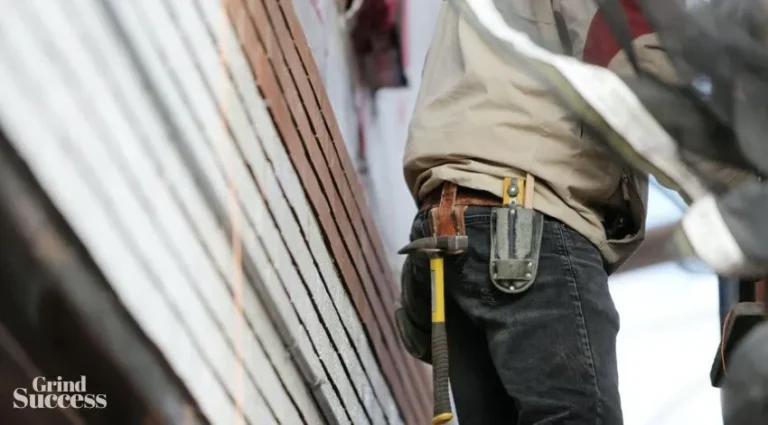10 Ways to Facilitate Workers at a Construction Site

Construction sites are known for being busy, challenging, and often hazardous environments. Workers must carry out physically demanding tasks while adhering to strict safety protocols.
With the construction industry booming in Texas, ensuring workers are well-equipped and supported on the job is more important than ever.
In fact, according to the U.S. Census Bureau, there were over 568,930 construction jobs in Texas in 2021, making it one of the largest employers in the state.
In this blog post, we’ll explore ways employers and managers can facilitate workers at a construction site to help them perform their jobs to the best of their ability while minimizing the risk of accidents and injuries.
1. Adequate Break Areas
According to the Bureau of Labor Statistics, the rate of nonfatal occupational injuries and illnesses in Texas was 2.1 cases per 100 full-time workers in 2021. This is near to the national average of 2.7 cases per 100 full-time workers in the same year.
The need for adequate break areas is especially important in Odessa, Texas, where the oil and gas industry is a major contributor to the local economy. Construction workers in the oil and gas industry often work long hours in harsh weather conditions, increasing the risk of heat-related illnesses and fatigue.
In addition, workers must also be provided adequate housing and sanitation facilities. This ensures workers have a safe and comfortable resting place between shifts and helps reduce the risk of spreadable illnesses.
The Iron Guard Housing facility is a great example of a well-designed and safe break area for construction workers in Texas.
Managers looking to provide such facilities for their workers can search the keywords corporate housing Odessa TX and contact them for further assistance. Such facilities can reduce stress and improve overall well-being, especially for workers away from home.
2. Provide Personal Protective Equipment (PPE)
PPE such as hard hats, safety glasses, high visibility vests, gloves, and respiratory masks is a cost-effective way to protect workers from hazards such as falling objects, debris, and dust.
By providing PPE, employers demonstrate their commitment to their workers’ safety and well-being while complying with legal and regulatory requirements. Workers who feel safe and protected are more likely to be efficient and motivated to work.
3. Proper Equipment Maintenance
By regularly inspecting, cleaning, and repairing equipment, workers can avoid unexpected downtime and minimize the risk of accidents.
Well-maintained equipment also helps workers to complete their tasks more efficiently, saving time and reducing project costs. Regular maintenance can prolong the lifespan of the equipment, minimizing the need for replacement and reducing expenses.
Additionally, implementing a maintenance schedule and training workers on the proper use and maintenance of equipment can increase worker safety, boost morale, and improve overall productivity at the construction site.
4. Regular Safety Training
Regular safety training sessions help to keep workers informed about the latest safety guidelines, procedures, and equipment to minimize the risk of accidents and injuries.
Regular safety training allows workers to ask questions, raise concerns, and discuss potential hazards. It helps to create a safety culture where workers feel comfortable reporting incidents or near-misses and are empowered to take an active role in preventing accidents.
5. Adequate Hydration
The physically demanding nature of construction work and exposure to hot and humid conditions increase the risk of dehydration and heat-related illnesses.
Providing access to clean drinking water and encouraging workers to consume fluids regularly can help maintain their physical and mental performance, reduce the risk of accidents, and prevent health issues such as heat exhaustion and heat stroke.
Employers should also educate workers on the importance of hydration and provide breaks to allow workers to rehydrate throughout the day.
6. Adequate Ventilation
Construction work often involves using materials and equipment that release fumes, dust, and other airborne particles that can harm workers’ health. Proper ventilation in the work area can reduce workers’ exposure to these hazardous substances, mitigating the risk of respiratory problems and other health issues.
7. Offer Onsite Medical Assistance
Providing access to a first aid kit and an onsite medical professional can help handle any emergencies, ensuring that workers receive prompt and appropriate medical attention.
This approach can help to reduce the severity of injuries and increase the chances of a successful recovery. It also demonstrates that the employer values the well-being of their employees and is committed to providing a safe work environment.
8. Provide Clear Communication
Effective communication among workers, supervisors, and project managers can help ensure that everyone is on the same page regarding project objectives, timelines, and safety measures.
This can prevent errors, misunderstandings, and delays, ultimately impacting the project’s success. Clear communication can also help mitigate potential hazards and promote a safer working environment by ensuring workers understand their roles and responsibilities and any associated risks.
9. Efficient Scheduling
Construction projects involve many activities that must be completed in a timely and efficient manner to ensure the successful completion of the project.
Scheduling involves creating a plan of action that outlines the tasks that need to be performed, the resources required, and the timeline for completion.
By implementing an efficient scheduling system, workers can optimize their time and resources, ensuring that they can complete their tasks on schedule.
This helps to reduce the risk of delays and budget overruns, which can significantly impact the project’s success.
It can also help identify and mitigate potential issues before they become major problems, enabling workers to respond quickly and effectively to any challenges during the construction process.
10. Fair Compensation
Providing employees with fair pay for their work, including overtime or additional hours worked, helps to ensure that they feel valued and motivated to perform at their best. It is also crucial to offer opportunities for career growth within the organization, such as promotions and other development opportunities.
By investing in workers’ professional growth, construction companies can create a more skilled and engaged workforce that is better equipped to meet the demands of the industry.
Conclusion
Facilitating workers at a construction site is essential for ensuring that work is completed efficiently, safely, and with the highest quality standards.
The various ways to facilitate workers include providing appropriate safety equipment, adequate training and supervision, promoting teamwork and communication, ensuring proper scheduling and coordination, and providing appropriate facilities and amenities.
By prioritizing the well-being and productivity of workers, construction companies can create a positive work environment that ultimately benefits the workers, the project, and the organization as a whole.






